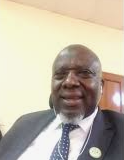Influence of Social Media Use on Sexual Behaviour of Undergraduate Students in Ilorin, Kwara State, Nigeria
DOI:
https://doi.org/10.53449/ije.v3i2.128Keywords:
influence, sexual behaviour, social media, students, undergraduateAbstract
Despite the fact that social media enhances learning opportunities and increases access to information, it has also paved way for exposure to illicit sexual content online and misuse of social sites which has been linked to risky sexual behaviour among undergraduates. Therefore, an institutional-based cross-sectional design was utilized to determine the influence of social media use on sexual behaviour of undergraduate students in Ilorin, Kwara State, Nigeria. Purposive sampling technique was used to select a sample size of 315 bonafide students. Data were collected using self-developed structured questionnaires and the same were analysed using descriptive and inferential statistics with level of significant set at 5% (0.05). The study revealed that all of the respondents 304 (100.0%) had access to internet and the majority 264 (86.8%) accessed the internet using mobile phones. Only 100(32.9%) of the respondents had high exposure to sexual content on social media and significant difference was observed in the extent of exposure to sexual contents via social media between the genders of participant with more males using social media for sexual purposes than females. The findings of the study also showed that there is significant association between exposure to sexual contents on social media and risky sexual behaviour among undergraduate students. Therefore, there is need for university authorities, parents and other stakeholders to plan interventional strategies to curb the use of social media to view illicit sexual content among undergraduate students.
Downloads
References
Adegboyega, L. O. (2019). Influence of social media on sexual behaviour of youth in Kwara State, Nigeria: Implication for counselling practice. Canadian Journal of Family and Youth/le Journal Canadian de famille et de la Jeunesse. 11(1), 85-103.
Ahmed, M. R. (2014). Social media usage, sexual behavior and risk perception among adolescents of some private high schools in Addis Ababa. Paper. Addis Ababa, Ethiopia.
Ajagunna, J. A., & Oladeji, D. (2017). Media Influence as predictors of adolescent’s sexual risky behaviour in Nigeria. MOJ Women’s Health 5(1): 00112. DOI: 10.15406/mojwh.2017.05.00112.
Arulogun, O. S., Ogbu, I. A., & Dipeolu, I. O. (2016). Influence of internet exposure on sexual behavior of young persons in an urban district of southwest Nigeria. The Pan African Medical Journal, 25.
Asekun-Olarinmoye, O. S., Asekun-Olarinmoye, E. O., Adebimpe, W. O., & Omisore, A. G. (2014). Effect of mass media and internet on sexual behavior of undergraduates in Osogbo metropolis, Southwestern Nigeria. Adolescent Health, Medicine and Therapeutics, 5, 15-23.
Bailey, J. V., Murray, E., Rait, G., Mercer, C. H., Morris, R. W., Peacock, R., & Nazareth, I. (2012). Computer based interventions for sexual health promotion: Systematic review and meta-analyses. International Journal of STD & AIDS, 23(6), 408-413.
Brown, J. (Ed). (2008). Managing the media monster: The influence of media (from television to text messages) on teen sexual behavior and attitudes. Washington, DC: National Campaign to Prevent Teen and Unplanned Pregnancy. Retrieved from: https://www.michigan.gov/documents/mdch/Managing_the_Media_Monster_-_The_Influence_of_the_Media_on_Tee_312712_7.pdf
Clement, J. (May 14, 2019). Nigeria: number of internet users 2017-2023. Retrieved from: https://www.statistica.com/statistics/.183849/internet-users-nigeria/
Ekpenyong, A. S., & Turnwait, M. O. (2016). Social media and sexual reproductive health behaviour among adolescents in Bayelsa State, Nigeria. American International Journal of Research in Humanities, Arts and Social Sciences, 14(2), 94-98.
Gabarron, E., & Wynn, R. (2016). Use of social media for sexual health promotion: A scoping review. Global Health Action, 9(1), 32193.
Imaledo J. A., Peter-Kio, B. O., & Asuquo, E. O. (2012). Pattern of risky sexual behavior and associated factors among undergraduate students of the University of Port Harcourt, Rivers State, Nigeria. The Pan African Medical Journal, 12, 97. doi:10.11604/pamj.2012.12.97.1384.
Internet World Statistics. (June 30, 2019). Internet penetration in Africa: Estimated internet users in Africa. Retrieved from www.internetworld stats.com/stat on 14/04/19
Kamaku, M. N., & Mberia, H. (2014). The influence of social media on the prevalence of sexual harassment among teenagers: A Case study of secondary schools in Kandara sub-county, Kenya. International Journal of Academic Research in Business and Social Sciences, 4(4), 420.
Kaplan, A. M., & Haenlein, M. (2010). Users of the world, unite! The challenges and opportunities of social media. Business horizons, 53(1), 59-68.
Kassa, G. M., Degu. Yitagew, M., Misganaw, W., Muche, M., Demelash, T., & Ayehu. (2016). Risky sexual behavior and associated factors among Jiga High school and preparatory school students, Amhara Region, Ethiopia. International Scholarly Research Notices, 2016.
Kietzmann, J. H., Hermkens, K., McCarthy, I. P., & Silvestre, B. S. (2011). Social media? Get serious! Understanding the functional building blocks of social media. Business Horizons, 54(3), 241-251.
Landry, M., Vyas, A., Turner, M., Glick, S., & Wood. S. (2015). Evaluation of social media utilization by Latino adolescents: Implications for mobile health interventions. JMIR Mhealth Uhealth. 29, (3), e89. doi: 10.2196/mhealth.4374.
Landry, M., Turner, M., Vyas, A., & Wood, S. (2017). Social media and sexual behavior among adolescents: Is there a link? JMIR Public Health and Surveillance, 3(2), e28.
Orozco-Olvera, V., Shen, F., & Cluver, L. (2019). The effectiveness of using entertainment education narratives to promote safer sexual behaviors of youth: A meta-analysis, 1985-2017. Plos One, 14(2), e0209969.
Pew Research Centre. (2018). Internet connectivity seen as having positive impact on life in Sub-Saharan Africa but digital divides persist. Retrieved from: www.pewresearc.org. 201.419.4517.
Radcliffe, D., & Lam, A. (2018). Social media in the Middle East: The story of 2017. Available at SSRN 3124077.
Rafferty, F. (2009). Boys should be boys – is it that simple? Education Journal, 116, 32-33.
Stevens, R., Bleakley, A., Hennessy, M., Dunaev, J., & Gilliard-Matthews, S. (2019). # digital hood: Engagement with risk content on social media among black and Hispanic youth. Journal of Urban Health, 96(1), 74-82.








